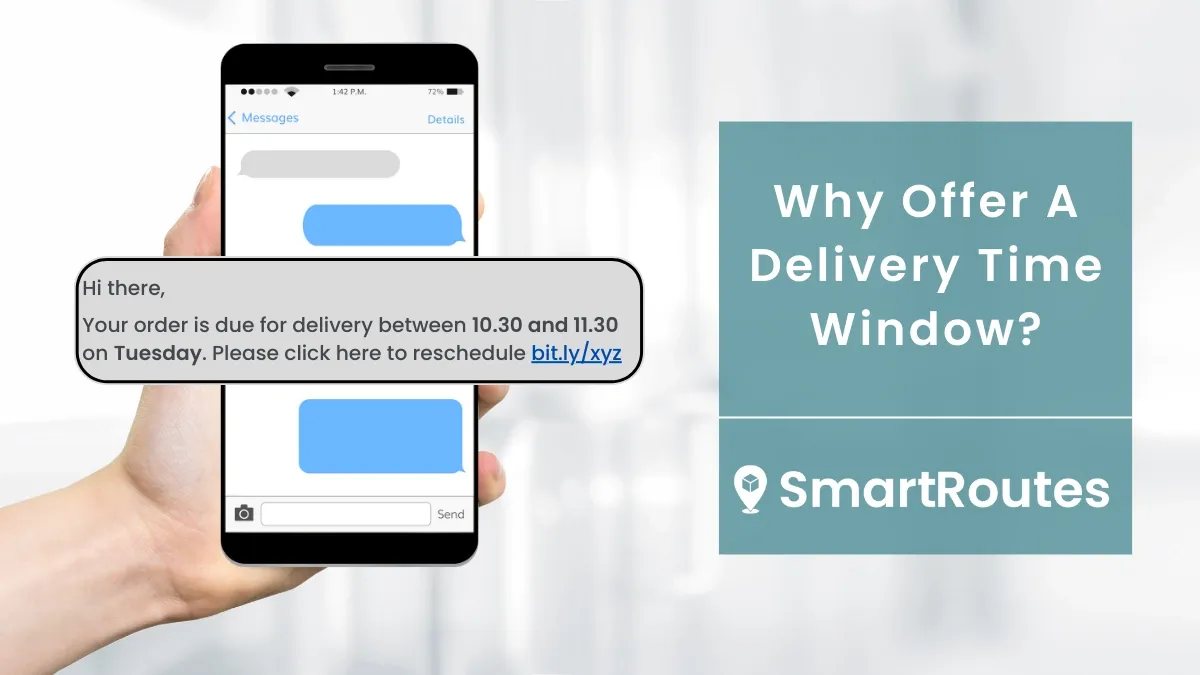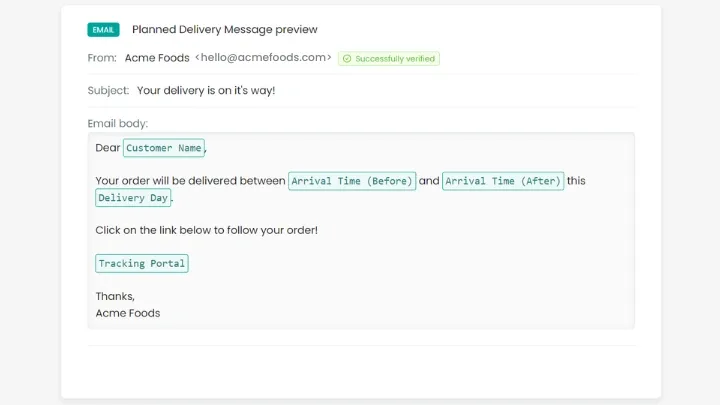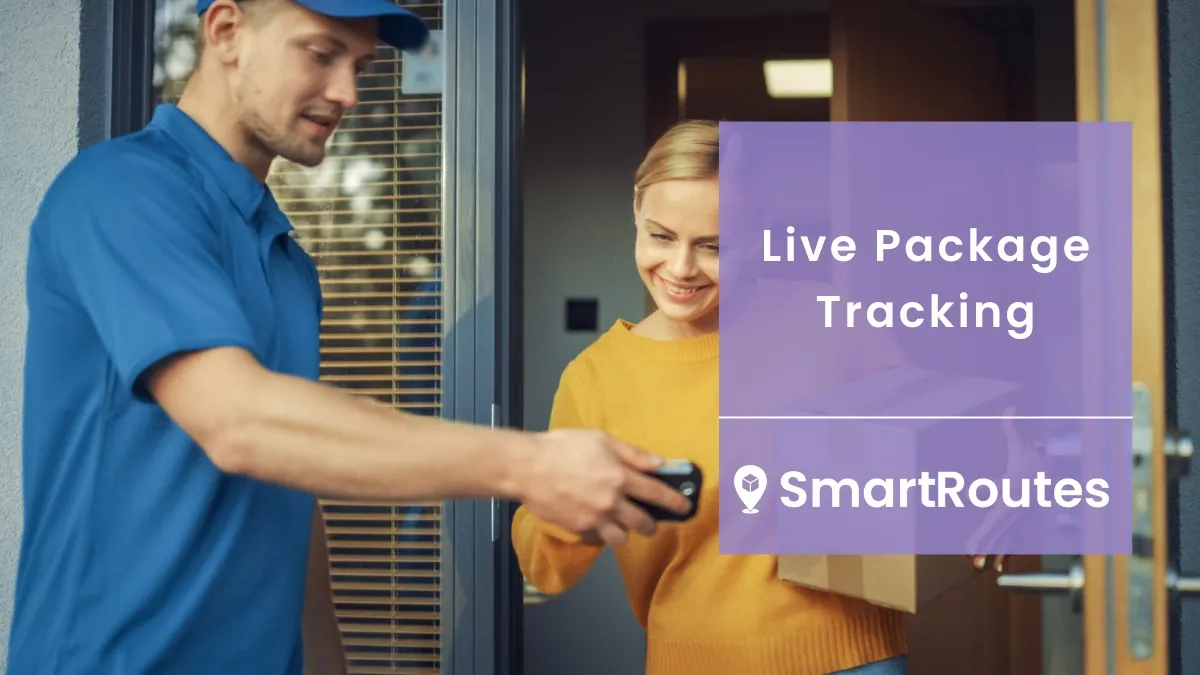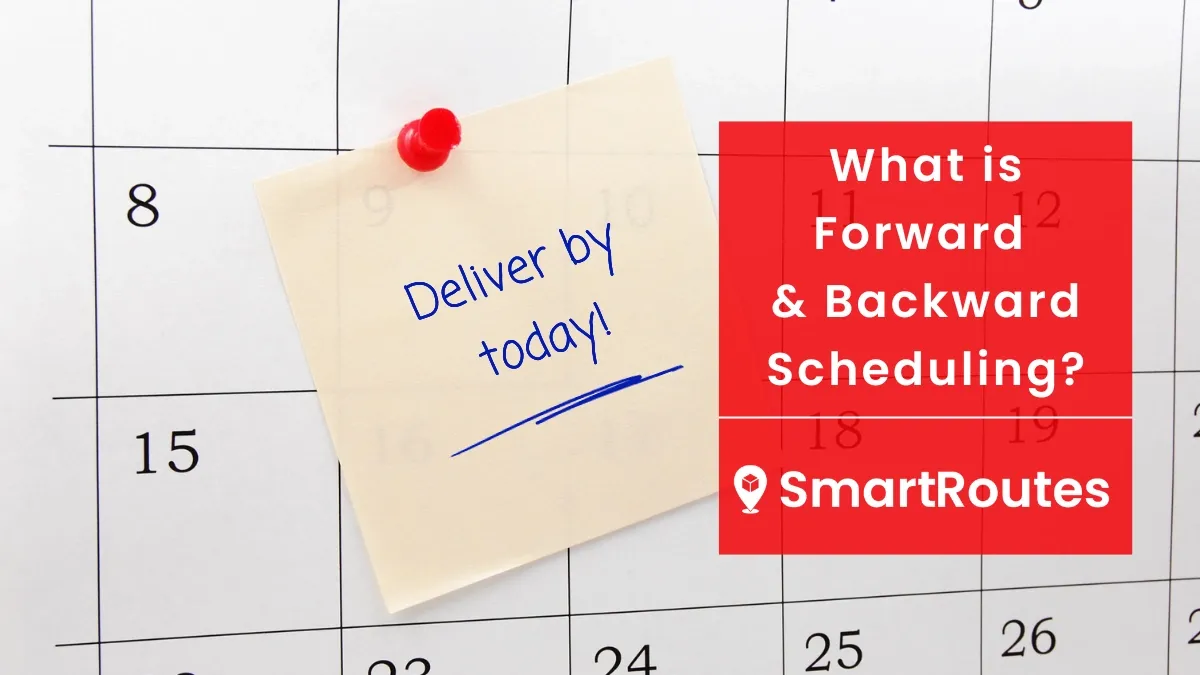Why Offer A Delivery Time Window?
In the following blog, we will look at the intricacies of delivery time windows, examining the various types, the processes involved, and the benefits they bring to businesses.

It’s no secret that the demand for swift and flawlessly executed deliveries has been steadily on the rise. As the e-commerce and logistics sectors continue to evolve, so do the standards set by customers for a seamless delivery experience. A recent study revealed that a whopping 65% of shoppers are willing to pay more for faster, more reliable deliveries. This highlights the growing importance customers place on the timeliness and reliability of deliveries.
Recognizing and responding to these escalating expectations is not just a matter of staying competitive; it's a fundamental necessity for sustained business growth. Businesses that understand the need to meet or, better yet, exceed these rising customer expectations are better positioned for customer retention.
This is where offering delivery time windows comes into play. By offering a designated timeframe within which customers can anticipate the arrival of their orders, businesses can bridge the gap between consumer expectations and operational efficiency.
In the following blog, we will look at the intricacies of delivery time windows, examining the various types, the processes involved, and the benefits they bring to businesses.
What is a Delivery Time Window?
Types of Delivery Time Windows
How to Start Offering Delivery Time Windows
Benefits of offering a Delivery Time Window
What is a Delivery Time Window?
A Delivery Time Window is essentially a designated time range during which customers can expect to receive their deliveries. This timeframe is typically chosen by the customer or determined by the business and then accepted by the customer.
Whether it's a brief window of minutes or a more extended one spanning hours, customers can rely on their delivery arriving during this designated time. This reliability increases the likelihood of them being present to accept their orders. This becomes particularly valuable when dealing with perishable items, deliveries requiring assistance for lifting into premises, or when transporting high-end or expensive goods that may necessitate proof of delivery.
SmartRoutes Route Planning Software
Streamline your entire delivery process, all from one platform

Types of Delivery Time Windows
1. Small Time Windows: Here, customers enjoy the flexibility of selecting a specific time slot that aligns with their preferences. It's all about offering them the convenience of choice. However, this flexibility does come with its challenges. When customers choose time windows with significant gaps in the same area, drivers might find themselves backtracking, revisiting the same locations hours apart.
2. Large Time Windows: These delivery windows tend to be planned within a more extensive timeframe, often spanning around 10 business days. It's a common practice among Third-Party Logistics (3PL) providers. The primary aim here is to ensure meticulous organization within the fleet. While this approach streamlines the logistics backend, it may present a downside for customers – limited choices. When customers are presented with a broader delivery window, it might not align well with their preferences for a specific delivery time.
3. A Mixture of the Two: This could involve giving your customers the opportunity to pick specific time slots of say 1 or 2 hours on a certain day. This approach caters to their desire for precise delivery timings, offering utmost convenience. Although the customer might not know exactly what time the delivery will arrive, they will know that it will come within the allotted time. Simultaneously, behind the scenes, businesses orchestrate their drivers' schedules without unnecessary zigzagging.
Alternatively, another approach involves initially setting a time window while leaving room for customers to confirm or make changes if needed. This flexibility doesn't compromise the business's operational efficiency. This option ensures a seamless delivery while accommodating customers' evolving needs.
How to Start Offering Delivery Time Windows
Here are the steps involved in implementing delivery time windows in your business:
1. Empower Customers with Choice
Allowing customers to pick their preferred delivery timeslot is key. Whether it's a specific hour, a window of a few hours, or a broader timeframe, offering flexibility in choosing delivery times ensures customers are more likely to be available and eager to receive their orders.
2. Harness the Power of Routing Software
Routing software takes these chosen time slots factoring in various variables such as location proximity, traffic patterns, and delivery priorities, and organizes the deliveries in the most efficient manner possible. If timeslots change, routes can be edited ahead of time or on the fly.

3. Keep Customers in the Loop
Providing Estimated Time of Arrivals (ETAs) to customers is crucial. Real-time updates about their delivery's whereabouts ensure transparency and build trust. Whether through text messages, emails, or a dedicated tracking portal, keeping customers informed is paramount. Even if a customer has booked their timeslot, it’s still important to keep them in the loop and let them know of any updates.
Benefits of offering a Delivery Time Window
1. Enhanced Customer Satisfaction
Offering a delivery time window is not just about delivering a package—it's about delivering an experience that resonates positively with the modern customer. Convenience and predictability hold immense value to your customers.
Offering customers the option to pick a timeslot for their delivery means they will be able to anticipate and prepare for their package's arrival. When customers know precisely when to expect their orders, they feel valued it will likely lead to repeat business and positive word-of-mouth referrals.
2. Efficient Handling of Perishable Goods
For businesses that handle perishable items, the use of delivery time windows proves to be an effective means of preserving product quality during transportation. When dealing with cold chain deliveries, timeliness becomes critical. Ensuring someone is available to receive the order is equally crucial, especially if the delivery requires refrigeration upon arrival. Alerting customers about the estimated delivery time becomes essential to ensure their presence for receiving it. Delivery time windows play a pivotal role in this process. They provide customers with a precise schedule, ensuring they are prepared to receive their orders. By narrowing the delivery window, businesses can finely coordinate deliveries, aligning them precisely with the freshness requirements of their products.
3. Streamlined Communication
Delivery time windows play a pivotal role in facilitating this seamless communication between businesses and their customers.
The provision of Estimated Time of Arrivals (ETAs) or real-time tracking updates transforms the delivery process into a transparent and interactive experience.
With ETAs or tracking updates, they're not left in the dark. They receive timely notifications about when their package is expected to arrive. This isn't merely about relaying information; it's about empowering customers, putting them in control of their delivery experience.
When customers are kept informed and engaged throughout the delivery process, it builds a sense of trust and reliability in the business.

4. Reduced Failed or Missed Deliveries
Delivery windows ensure that customers are not left guessing or waiting indefinitely for their packages to arrive. They know precisely when to expect their order, and as a result, when to be available. Customers being present during the delivery window drastically reduces the chances of missed deliveries. This results in cost savings by mitigating the expenses associated with re-deliveries or returns due to missed deliveries.
It also enhances overall operational efficiency and customer satisfaction. Businesses can streamline their operations, focusing on delivering quality service, while customers experience a hassle-free delivery process, fostering increased satisfaction and loyalty.
5. Optimized Resource Allocation
Using delivery windows is not just about delivering a package; it's about delivering it in the most resource-efficient way possible. These windows act as the blueprint for planning routes and schedules. This precision planning ensures that routes are meticulously organized to accommodate multiple deliveries within specific timeframes. By condensing delivery windows, businesses minimize idle time and unnecessary mileage. This reduction in travel not only decreases fuel consumption but also reduces associated costs.
Optimized delivery schedules mean optimized workforce allocation. Businesses can align their workforce more effectively with the delivery demands within specified timeframes. This translates to improved productivity.
Ensure Delivery Time Windows are Accurate with SmartRoutes
Businesses aiming for excellence in their delivery services can significantly elevate their standards by harnessing the power of delivery time windows. Using delivery windows allows businesses to ensure timely deliveries and that packages arrive precisely when expected.
To achieve this level of precision and efficiency, consider leveraging SmartRoutes—a robust platform designed to optimize delivery processes. Seamlessly adapt to fluctuating schedules, optimize routes on the go, and ensure that each delivery arrives promptly within the specified window.
Experience firsthand how SmartRoutes can transform your delivery operations with a 7-day free trial.
Frequently asked questions
1. How do Delivery Time Windows benefit customers?
Enhanced Convenience: Delivery Time Windows offer customers the flexibility to anticipate and plan for their deliveries, ensuring they're available to receive their orders.
Predictability: They provide a clear timeframe, boosting predictability and allowing customers to schedule their day around the delivery, enhancing overall convenience.
Customer Satisfaction: By meeting customer preferences for precise delivery times, it fosters a sense of reliability and satisfaction, resulting in a positive customer experience.
2. What challenges do businesses face in implementing Delivery Time Windows?
Logistical Complexities: Managing diverse customer preferences and optimizing routes to accommodate specific timeframes can pose logistical challenges, especially in high-demand areas.
Operational Balance: Balancing customer expectations for specific delivery times with operational efficiency can be challenging, as it may require reorganizing existing delivery processes.
Technology Integration: Implementing systems to manage and communicate delivery time windows effectively might require technological investments and adjustments in existing processes.
3. Are there industries where Delivery Time Windows are particularly crucial?
Perishable Goods: Industries dealing with perishable items, like food, pharmaceuticals, or floral arrangements, heavily rely on precise delivery time windows to maintain product freshness.
Healthcare: Delivery Time Windows are critical in healthcare for timely delivery of medical supplies, medications, and sensitive equipment to ensure patient care isn't compromised.
E-commerce and Retail: These industries greatly benefit from precise delivery windows to meet customer demands for quick, predictable deliveries, enhancing overall customer experience and loyalty.
If you enjoyed this blog, you might also be interested in:








